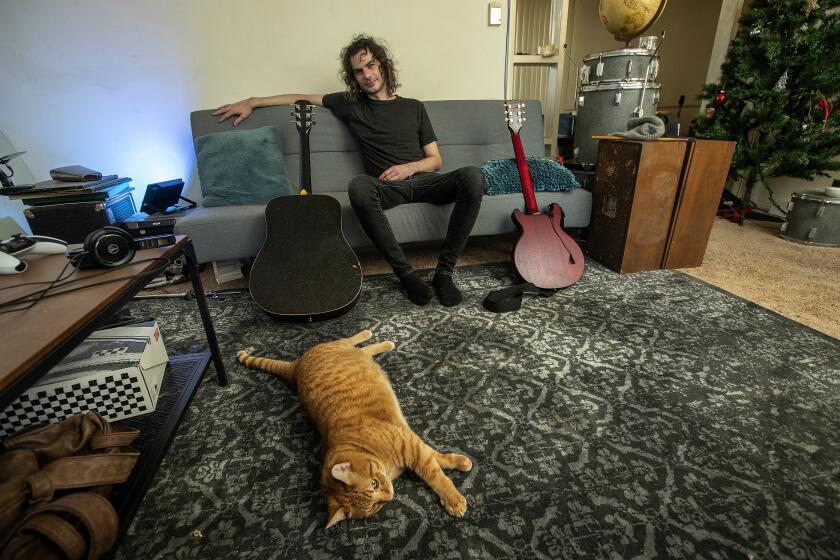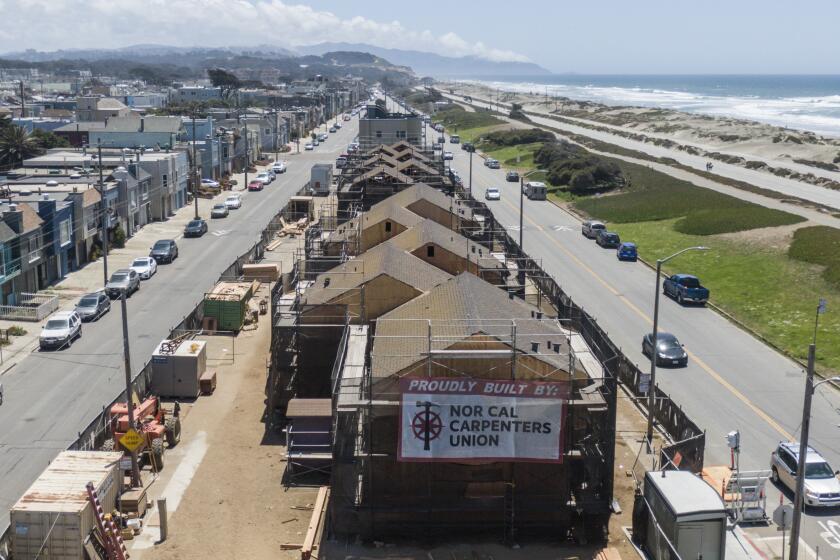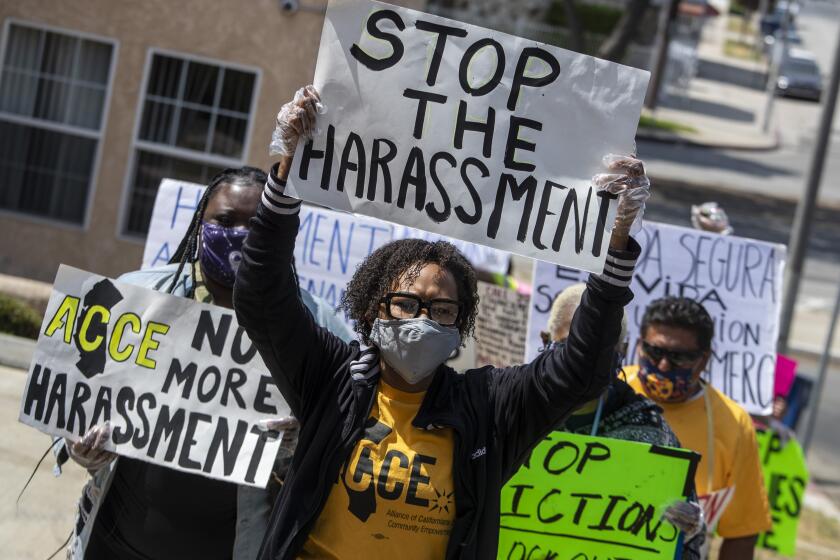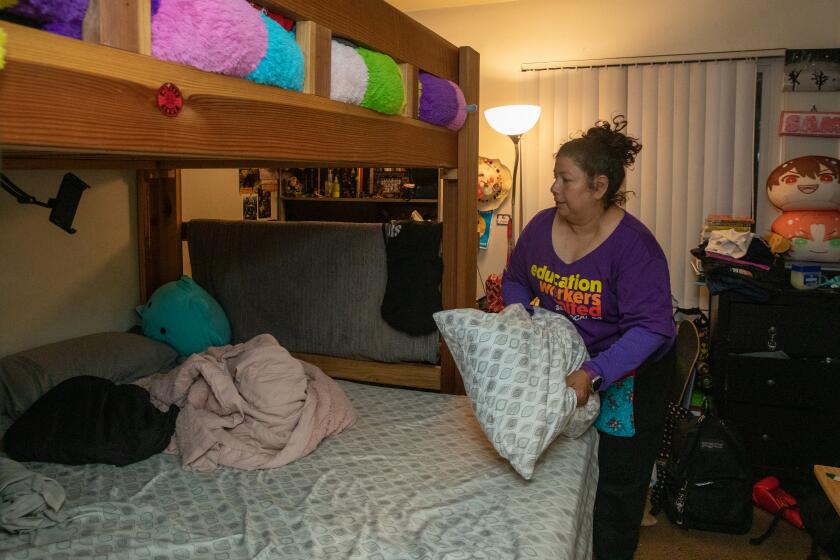
- Share via
Elvira Rincon never loved the small apartment that sits between Sunset Boulevard and Dodger Stadium. Even 30 years ago, shortly after she arrived from a small town in Queretaro, Mexico, and moved in with her husband and five children, the one-bedroom unit built in the 1920s felt cramped.
But over the decades she made it a home, planting a sprawling container garden of flowers, fruits and medicinal herbs to cure her family of stomach pains and colds. Her husband poured concrete to make a small patio in the courtyard, where they hosted birthday parties nearly every month. At $495 a month the rent-controlled apartment allowed Rincon, her children and now grandchildren to build a life in the heart of Los Angeles.
That made it easy for Rincon, 59, to dismiss the first buyout offer. A developer who bought the complex and a neighboring one last year proposed paying her and her neighbors $22,000 to leave. She did the math and figured the money would be gone in about one year in a county where the median rent for a one-bedroom is $1,600.
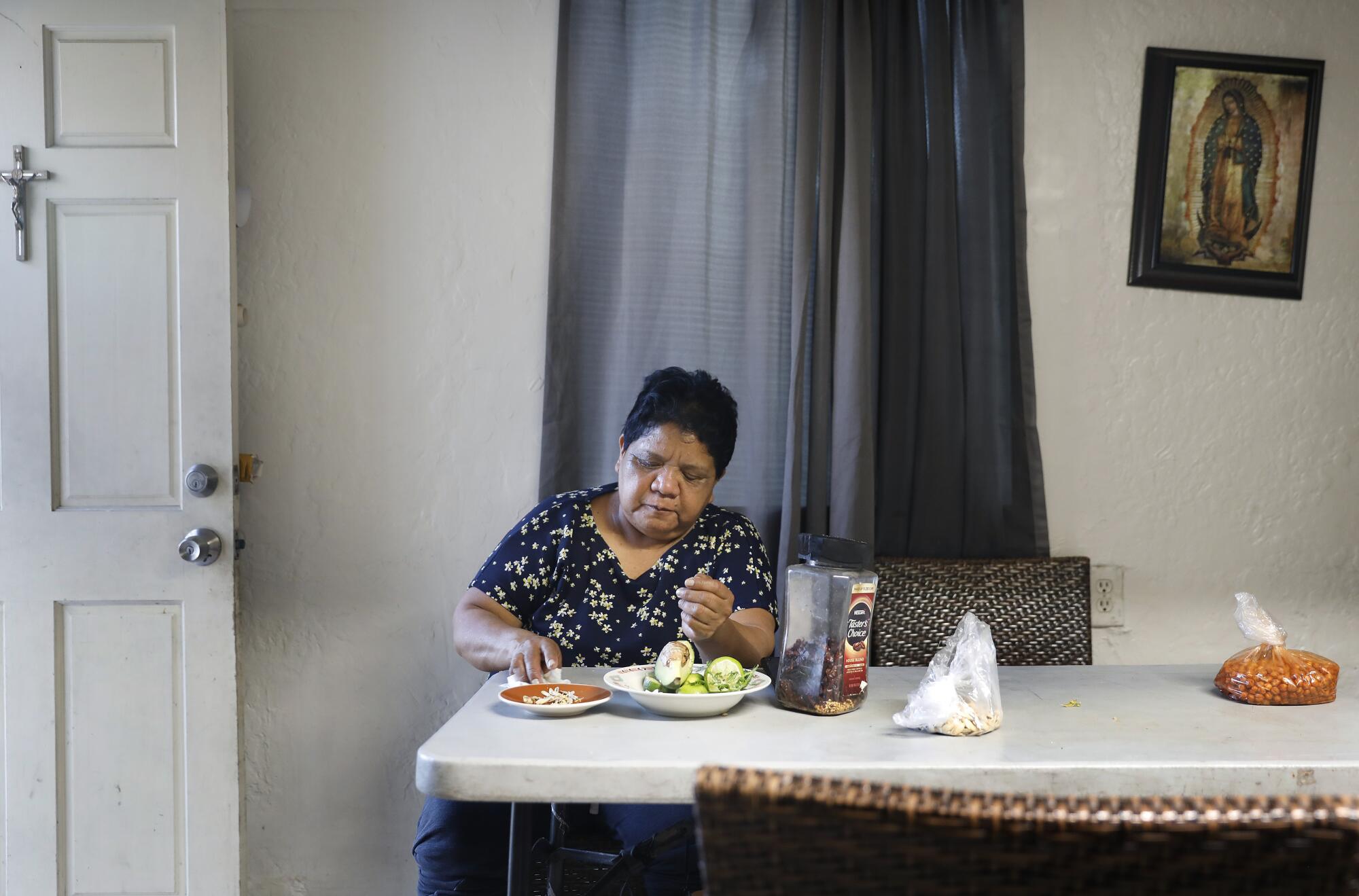
The second offer to Rincon and her neighbors came in February: $55,000. It was more money than she and her husband, who works in a local nursery, could ever save on their own — and still not enough to stay in her neighborhood for long.
Soon after, the owners sent workers to tear apart a storage shed she’d had for years and haul it away, along with a barbecue and many of her plants, saying they were health and safety violations. Rincon saw it as harassment meant to pressure her to go so the landlord could jack up the rent.
In California, a new report shows the most expensive cities for renters aren’t in Los Angeles or San Francisco.
Like so many others, she and her family had one shaky foothold keeping them in a rental market that was otherwise soaring out of reach, and they felt that people with more power than them were trying to shake them off of it.
The company says it was simply making changes requested by its insurance company and that it is listening to the concerns of residents, not trying to force them out.

Even so, Rincon and her neighbors are on edge, unsure what to expect next and asking themselves whether they still have a place in L.A.
“There are times when I feel desperate,” she said. “I get frustrated. And I tell my husband, ‘Let’s just go. Let’s just go.’ ”
In a city faced with a housing and homelessness crisis, where many renters pay more than half their income to live in overcrowded, aging homes, tenants like Rincon have what many others long for: low-cost housing.
At least seven low-income housing developments funded by the state have eclipsed more than $1 million per apartment to build in the last two years.
Though city and state officials are desperate to create more of it, developers are simultaneously reducing affordable units by buying out longtime rent-controlled tenants with cash-for-keys offers and renovating old buildings into pricey new apartments or condos. Many residents quietly accept the offers and leave. Others try to hold out, knowing that taking the money probably means leaving their communities or facing rent that’s double, triple or more what they currently pay. Sometimes, tenants say, that leads to harassment or pressure campaigns.
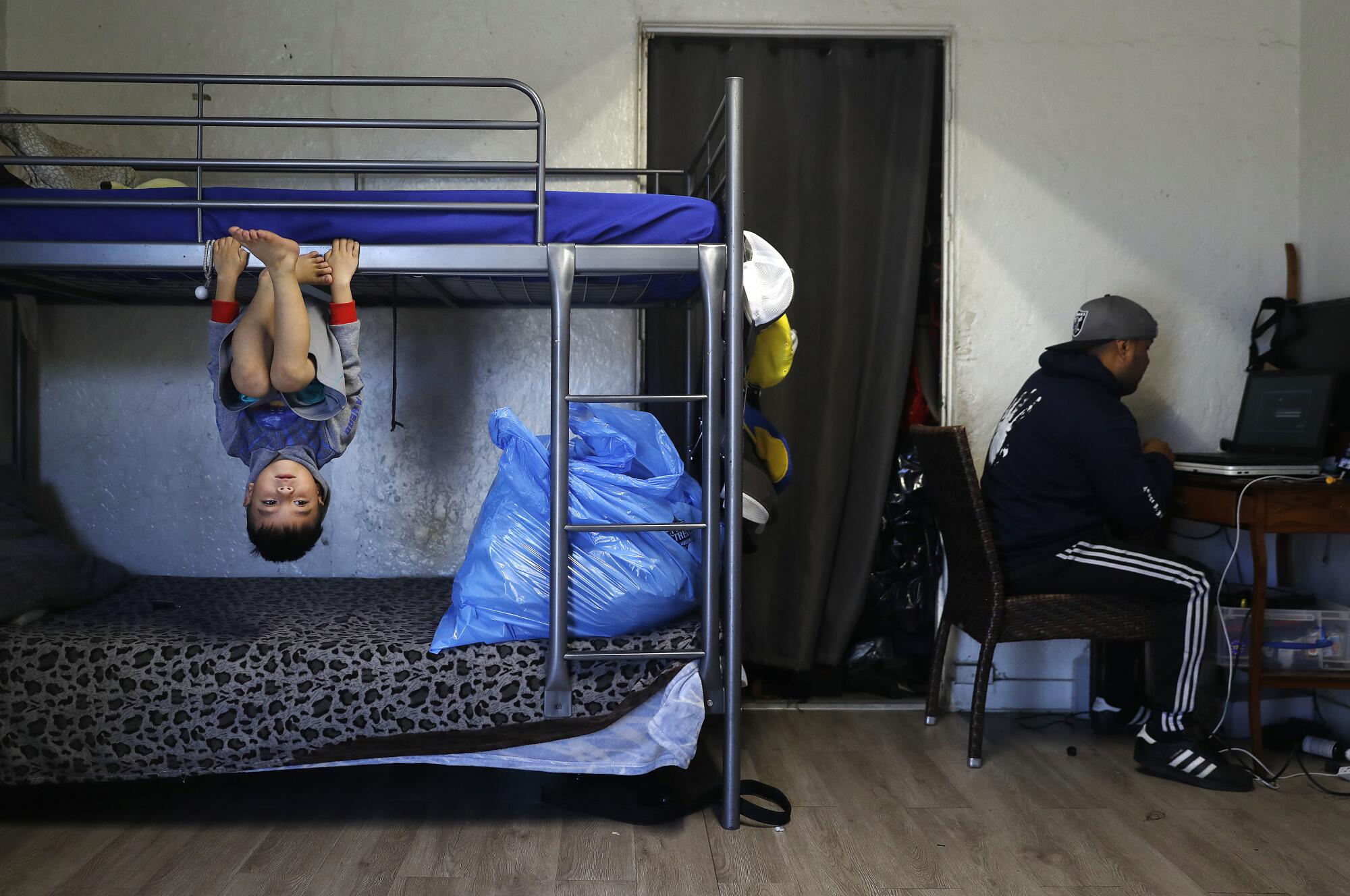
The city has adopted policies meant to protect tenants of rent-controlled buildings from being forced to accept buyout offers or being evicted for not accepting.
In some cases, landlords are required to offer to tenants a base amount for relocation — which ranges from about $12,000 to $23,000 for long-term renters. At times, owners offer more than that. But for tenants with very little income or credit, the money may not go very far once the sky-high rent of their next apartment is factored in.
City leaders have passed rules against harassment. But advocates say the rules lack enforcement, and plenty of tenants say harassment happens anyway with little recourse.
L.A. is poised to approve a law that seeks to ban tenant harassment. Landlord groups oppose the measure.
Rincon arrived in Echo Park in the mid-1990s, fleeing a severe recession in Mexico that left her family’s farm deeply in debt.

Her first home in the U.S. was in the same apartment complex where she lives now, just across the common area, in a unit she shared with her brother-in-law, Pedro Villegas, her husband and others. Three decades later, Villegas still lives in that apartment, paying monthly rent similar to Rincon’s, whose monthly payments have increased twice over the years to $640.
Despite language barriers, Rincon became close with her neighbors, who include an 80-year-old retiree, a nursing student, her mom and brother, and a Cambodian refugee. Their kids often served as translators.
They’ve watched out for each other’s children and grandchildren, fed each other’s pets and shared lemongrass and guavas from their gardens. Though Rincon doesn’t care for the loquat tree that grows in a corner of the property, she keeps watering it because her neighbors love the fruit.
“We’re more like a community. We have been for years,” said Virginia Watson, 80. “We all know each other. We talk. We watch out for each other. It’s very unusual for L.A. because in other places I’ve lived everybody’s kind of anonymous, in their own little cubicle.”
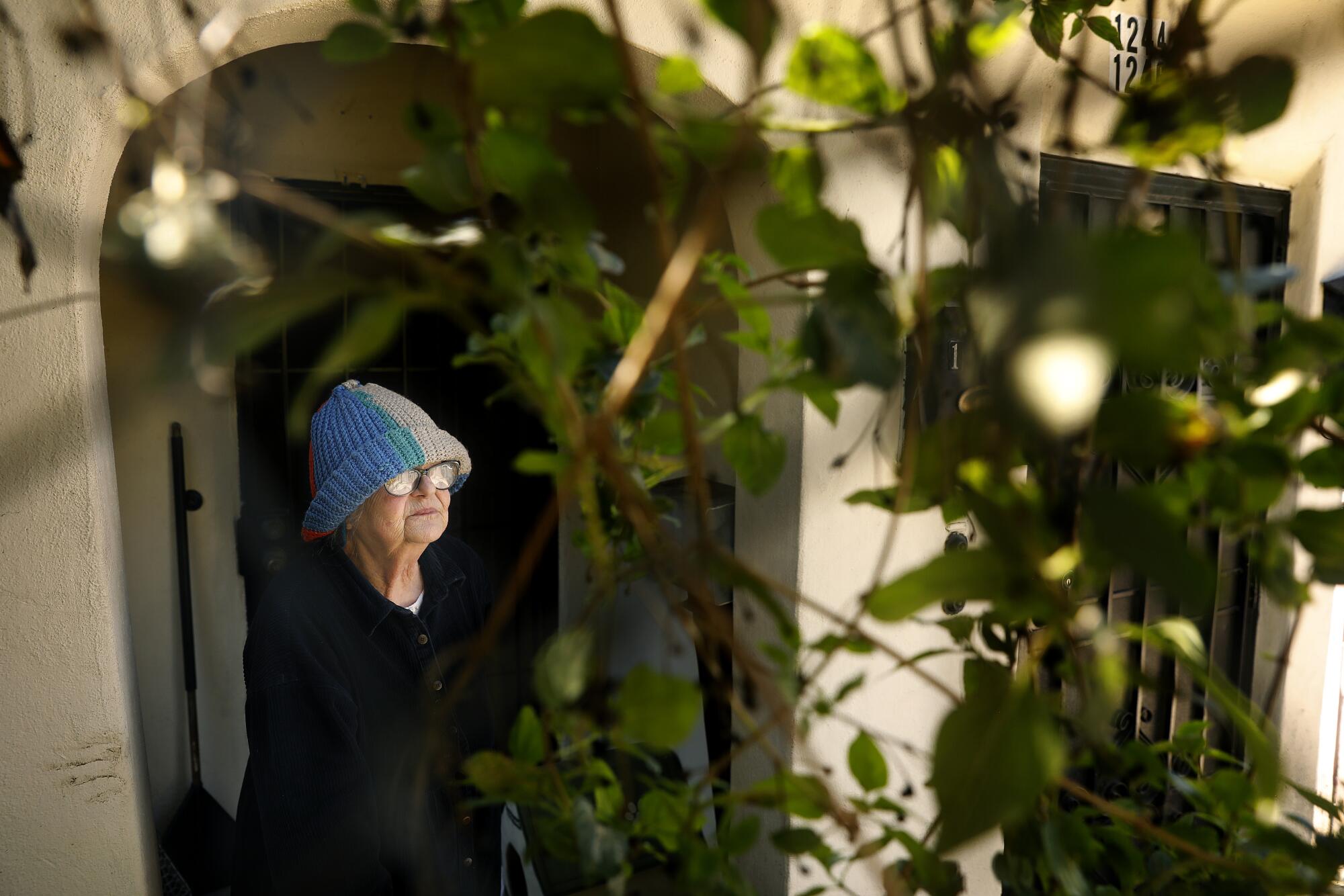
Once Watson retired and began living on a fixed income, she was able to stay in her home because the rent was manageable. The same was true for Rincon and her family when she injured her back and stopped working.
Villegas’ four children have lived their entire lives in the complex, roaming the hills of Elysian Park and riding their bikes to Echo Park. He works at a laundromat on Sunset Boulevard, a short walk away. His youngest is now a junior at Ramon C. Cortines school downtown.
Like Rincon, he knew the $55,000 offer wouldn’t last long in his community.
“The cost of rent is just too difficult,” he said. “The money doesn’t go far.”
A homeless encampment at Echo Park Lake has become a symbolically fraught case study of the rights to public spaces
Watson lives in a studio apartment adjacent to Rincon’s. She’s been there for 20 years, lives on Social Security and a small retirement income and pays $529 a month. When she’s looked online for other studios in the neighborhood, the most affordable cost is nearly $1,500 a month, an amount that she said would take about three-quarters of her income.

She might have considered the offer to leave if it was affordable to move in the city, she said.
But “rent is really, really high in L.A. I don’t know how you would manage for any length of time,” she said.
On Nov. 8, a few months after Watson, Rincon and their neighbors decided not to take the initial $22,000 offer to leave, the property owners, Lilac Development LLC, served Watson with a three-day notice to pay or leave, saying she had not paid her rent for the month, though she says it was paid.
Watson reported the incident to the housing department, which investigated and found the notice in violation of city code for failing to provide proper information under COVID-era tenant protections, according to public records.
One month earlier, the owners served another resident with a three-day notice to pay or vacate the property, saying they owed $86.
In that case, the housing department found a “potential violation of the Tenant Anti-Harassment Ordinance,” records show.

Subscribers get exclusive access to this story
We’re offering L.A. Times subscribers special access to our best journalism. Thank you for your support.
Explore more Subscriber Exclusive content.
In both cases, housing officials wrote letters to the owners, explaining the law.
Watson and her neighbors see this and other actions, including the workers who went to the complex twice in March, tore down Rincon’s shed and hauled away her plants, as a pattern of harassment meant to push them out of their homes.
“I wake up after dreaming that I’m in a battle with landlords, big companies,” Watson said.
Recently, she packed up many of her belongings, assuming she would soon be out of a home, and she has kept them that way.
“I don’t unpack them because I don’t know how long I’m gonna be able to be here,” Watson said.
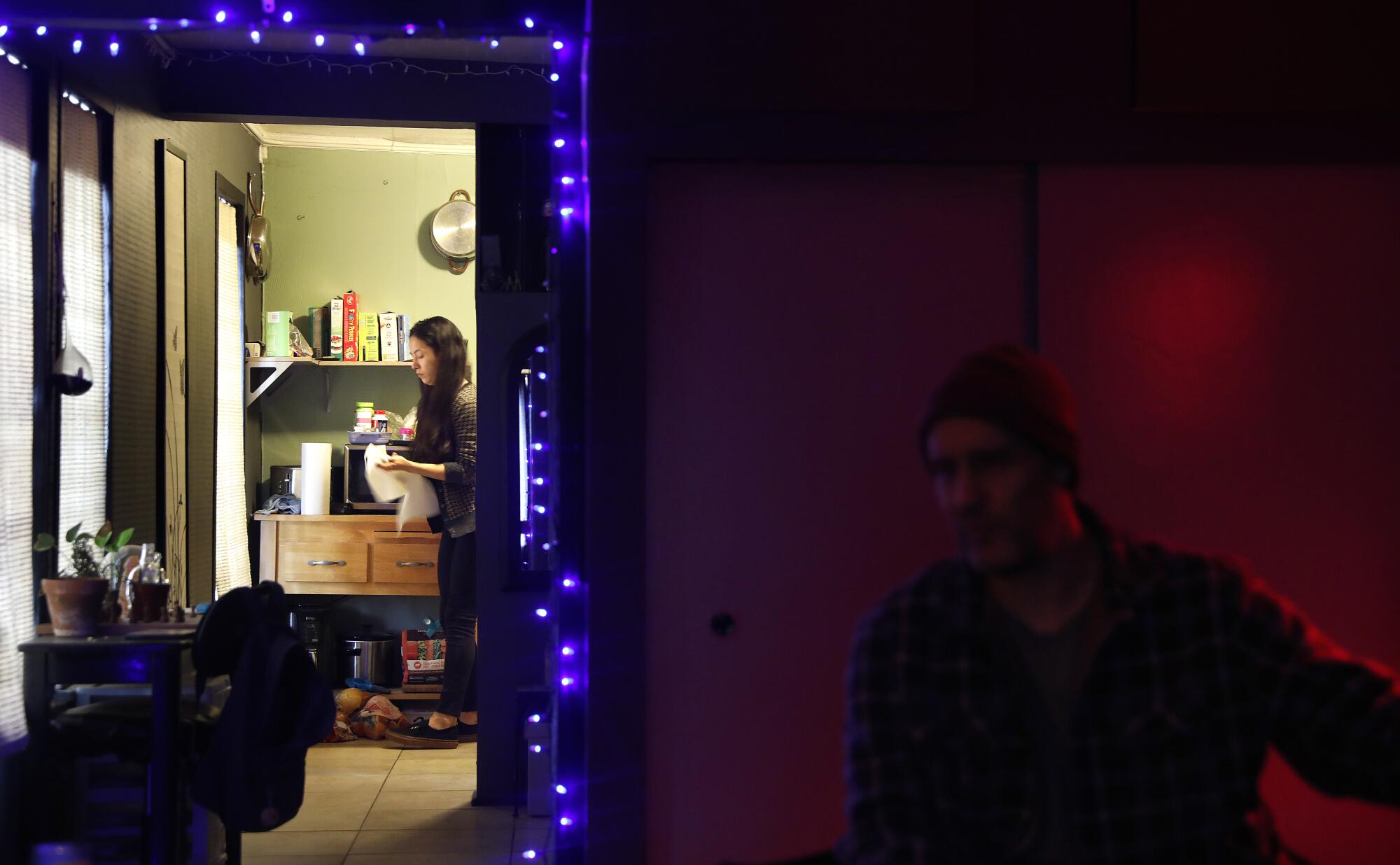

Rory Anglin and his girlfriend, Jenna Loredo, are the newest residents of the two complexes, having moved in four years ago. They pay $1,236 a month for their one-bedroom, which Anglin sees as “the last of the good rents in L.A.”
When he told his mom in Mississippi about the $22,000 offer to leave, she was stunned at the amount.
“In Mississippi, that does sound like a lot,” Anglin said. In L.A. it most certainly does not.
Even so, Anglin said they were willing to consider taking a buyout until they felt a harassment campaign against his neighbors had begun.
“The end game for me is ‘leave us alone,’ ” Anglin said. “If we decide we want to move, we’ll move. But before we do, I gotta make sure all this stuff stops. It has to stop.”
For many L.A. Unified workers who are on strike, the crux of the fight is the ability to live decently in L.A., where the cost of housing exerts a brutal burden.
If there’s a silver lining, Anglin said, it’s that the neighbors have become even closer in the last few months, forming a tenants’ association and strategizing together to push back against any harassment.
Sara Rose, a property manager for Lilac Development LLC, told The Times that although the company initially offered cash for keys in order to “try to get tenants paying market value,” the company was no longer pursuing that strategy and would focus on “making the property habitable for current tenants.”
The company is not trying to evict anyone, Rose said.

“It’s not something we would take further action on if it wasn’t appropriate to do so,” she said.
Rose also said Lilac Development sent workers to haul away Rincon’s shed, barbecue and plants after its insurance company “advised there was certain work that needed to be done” to get the property insured.
They plan to inspect each property to figure out what needs to be fixed. In April, a city housing inspector found several conditions affecting the “health and safety of the occupants” in Rincon’s building and issued an order to fix the problems, which include damaged plumbing, fences and paint, by May 11.

Residents say there is a long list of problems beyond what that inspection revealed: leaking ceilings, mold, broken heaters and damaged flooring.
“I think based on the feedback we’ve received so far there’s no interest from the residents” in cash for keys, Rose said. “If they are interested and they approach us, it would be something we’d be willing to discuss. We don’t want to continue reaching out on something they’ve made clear they’re not interested in.”
Rincon said the first she heard about the change in plans was from The Times.
For a long time now, she and her neighbors have felt as if they were in a state of limbo, waiting for an eviction notice or the return of workers tasked with hauling away more of their things. Like Villegas, she has seriously considered returning to Mexico, but her husband tells her they could never leave their children and grandchildren.
There was some relief hearing that the company would focus on making their home more livable rather than on getting them to leave. But she was also skeptical.
“Hopefully they follow through,” she said.
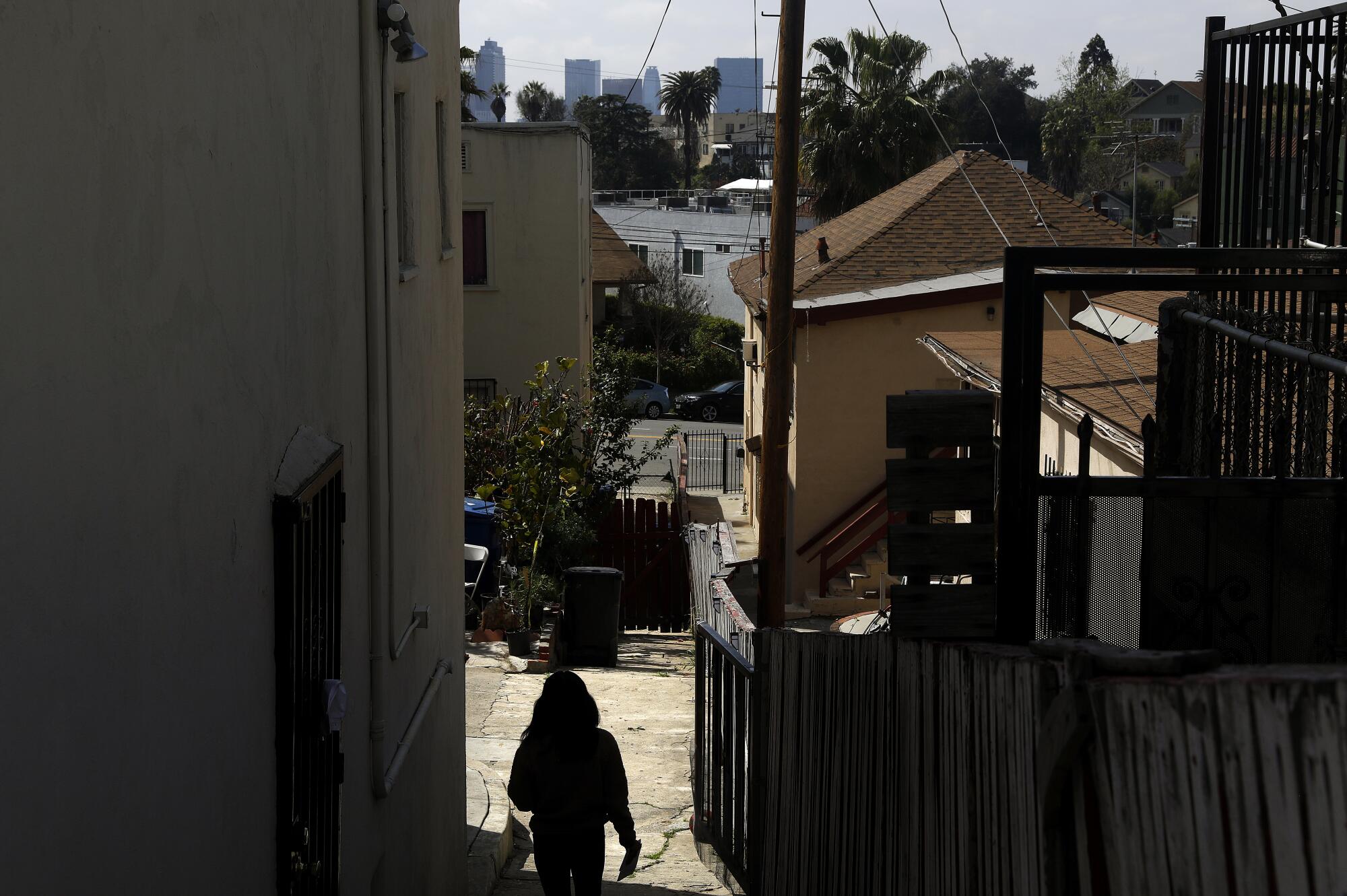
More to Read
Sign up for Essential California
The most important California stories and recommendations in your inbox every morning.
You may occasionally receive promotional content from the Los Angeles Times.
